Inner Mongolia Weather
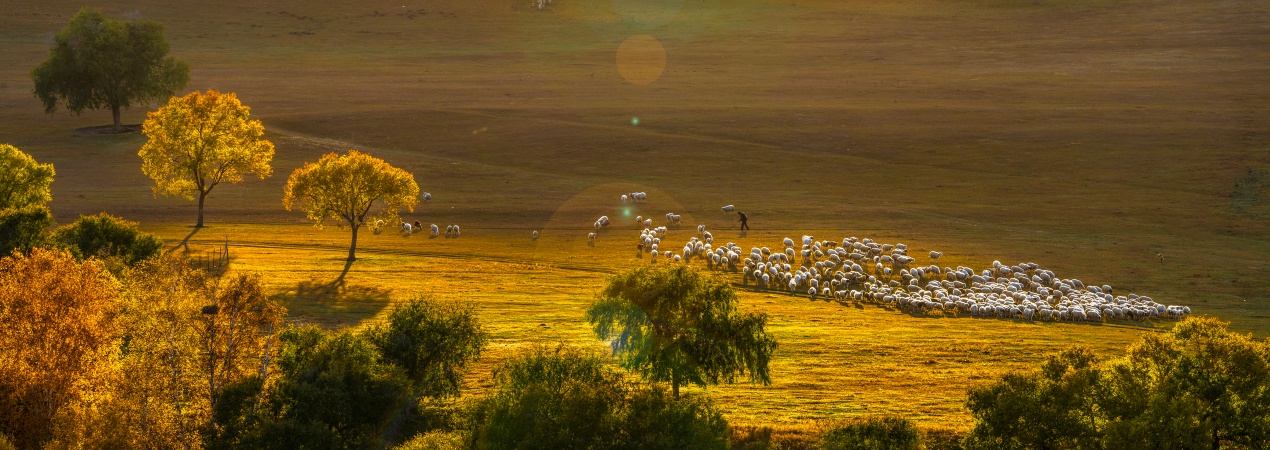
Spanning northern China, Inner Mongolia has big climate differences, but we usually call it a temperate continental climate. It has long, cold winters, short, warm summers, and windy springs and autumns—and this lets it be one of the most climatically diverse regions in China. People usually split Inner Mongolia into eastern, central-western and western regions to make climate statistics easier; these are used as climate references. The east has very cold winters and cool, rainy summers. The central part is dry, with little rain and big daily temperature differences. The west is very arid, with annual precipitation less than 100mm and frequent sandstorms. For the weather data of each region, we will use typical climate representative cities in them as references in this article.
Eastern Inner Mongolia(Hulunbuir,Hinggan League,Tongliao,Chifeng)
Eastern Inner Mongolia has distinct four seasons with significant temperature differences—cold winters, cool summers, and obvious temperature changes in spring and autumn. Below is weather data for Hulunbuir, a typical representative city in this region, for reference.
Hulunbuir Average Climate by Month| Jan | Feb | Mar | Apr | May | Jun | Jul | Aug | Sep | Oct | Nov | Dec | |
| High (℃) | -19 | -16 | -5 | 9 | 19 | 24 | 27 | 24 | 18 | 7 | -3 | -15 |
| High(℉) | -2.2 | 3.2 | 23.0 | 48.2 | 66.2 | 75.2 | 80.6 | 75.2 | 64.4 | 44.6 | 26.6 | 5.0 |
| Low (℃) | -28 | -26 | -16 | -2 | 5 | 12 | 17 | 14 | 6 | -2 | -11 | -23 |
| Low(℉) | -18.4 | -14.8 | 3.2 | 28.4 | 41.0 | 53.6 | 62.6 | 57.2 | 42.8 | 28.4 | 12.2 | -9.4 |
| Rain (mm) | 3.5 | 3.8 | 7.4 | 14.5 | 37.4 | 80.2 | 104.3 | 95.4 | 42.3 | 16.7 | 6.0 | 3.1 |
What to Wear in Each Season
Spring: Days and nights have a big temperature difference, and the temperature goes up little by little from 3℃ to 27℃. Start with thick sweaters and vintage denim cotton coats, plus retro plaid scarves. In April, switch to utility jackets or drapey trench coats, and wear simple long-sleeve T-shirts inside. For May, put on solid short-sleeve tops with thin knitted cardigans layered over them, and keep the cardigans ready for the slightly cool mornings and evenings.
Summer: It's very comfortable because average highs stay 24 - 27℃ and average lows 12 - 17℃. Put on short-sleeve tops, shorts or dresses. A light jacket or sun-protective clothing matched with them helps deal with occasional temperature drops or slight coolness in the morning and evening. For shoes, breathable flat shoes or sports shoes are good.
Autumn: The temperature drops from 18℃ to 7℃, then down to -2℃. In September, wear windbreakers or thick hoodies with jeans. In October, switch to thick outerwear like cotton-padded coats or light down jackets, with sweaters inside, and put on hats and scarves to keep warm.
Winter: It gets extremely cold, with average highs from -3℃ to -15℃ and lows from -11℃ to -23℃. Wear thick down jackets and thermal underwear, plus fleece-lined pants and snow boots. Also put on thick gloves, Lei Feng hats and scarves—wrap yourself up warmly to fight the bitter cold.
Things to Do in Each Season
Spring: Ice and snow start to melt, and the grassland slowly revives. You can go to the grassland to see all things sprout and have your first horse-riding experience; you can also join folk activities to feel the local customs. Besides, you can visit forest parks to watch trees bud, breathe fresh air, and enjoy the vitality of spring.
Summer: It is the most beautiful season in Hulunbuir, with endless grasslands and blooming flowers. You can camp on the grassland to watch the starry sky; go rafting on the Morigele River to feel the coolness; attend the Naadam Festival to watch wrestling and horse racing and experience Mongolian culture; you can also go bird-watching in wetlands to appreciate various birds.
Autumn: Mountains and forests turn into colorful hues, and the grassland also dons a golden coat. It is suitable for hiking in forest areas to see the mountains covered with dyed leaves; go fruit-picking on farms to experience the joy of harvest; take photos of autumn grasslands and lakes to record the brilliant autumn scenery; you can also visit hot springs to enjoy warmth in the slightly cool weather.
Winter: Everything is covered in snow, forming an icy world. You can go skiing in ski resorts to feel speed and excitement; experience reindeer sleigh rides and interact with cute reindeer; try the fun of pouring water to make ice in weather dozens of degrees below zero; you can also stay in yurts, eat hot pot, enjoy the snow scenery outside the window, and experience the unique winter charm.
Central-Western Inner Mongolia(Hohhot,Baotou,Ulanqab,Xilingol League)
Central-Western Inner Mongolia features hot summers, autumns with steady temperature dips from 20℃ to 7℃, and harshly cold winters where lows hit -13℃. Below is weather data for Hohhot, a typical representative city in this region, for reference.
Hohhot Average Climate by Month| Jan | Feb | Mar | Apr | May | Jun | Jul | Aug | Sep | Oct | Nov | Dec | |
| High (℃) | -5 | -1 | 9 | 19 | 24 | 27 | 28 | 27 | 20 | 15 | 7 | -2 |
| High(℉) | 23.0 | 30.2 | 48.2 | 66.2 | 75.2 | 80.6 | 82.4 | 80.6 | 68.0 | 59.0 | 44.6 | 28.4 |
| Low (℃) | -15 | -10 | -2 | 6 | 11 | 15 | 18 | 16 | 12 | 4 | -2 | -13 |
| Low(℉) | 5.0 | 14.0 | 28.4 | 42.8 | 51.8 | 59.0 | 64.4 | 60.8 | 53.6 | 39.2 | 28.4 | 8.6 |
| Rain (mm) | 1.6 | 2.4 | 5.3 | 12.5 | 28.7 | 53.9 | 92.3 | 89.4 | 42.6 | 16.3 | 4.7 | 2.1 |
What to Wear in Each Season
Summer: The average high temperature is 24 - 28℃, and it's hot. You can wear a cotton-linen short-sleeve shirt with loose linen pants—they're breathable and comfortable. You can also put on a printed dress with a lightweight sun-protective cardigan; it provides sun protection and adds a touch of style. For trips to the grassland or desert, bring a pair of comfortable canvas shoes—they're convenient for walking and versatile.
Autumn: The temperature gradually drops from 20℃ to 7℃. In September, wear a long-sleeve sweatshirt with utility shorts and a pair of Martin boots. In October, switch to a cashmere sweater, layer a caramel-colored trench coat over it, and match with straight-leg jeans. Also keep a knitted scarf ready—it can keep you warm and be a highlight of your outfit.
Winter: The average low temperature can drop to -13℃, making it bitterly cold. You need to put on a thick down jacket with a turtleneck cashmere sweater inside, match with fleece-lined jeans and snow boots. Also wear a woolen hat and a pair of leather gloves to keep the bitter cold out. If you go to an ice and snow festival, wear a windproof jacket for easy participation in various ice and snow activities.
Things to Do in Each Season
Spring: Ice and snow melt, and plants turn green gradually. You can hike in Daqing Mountain to see all things revive; visit Zhaojun Cultural Tourism Area to learn about historical culture; you can also go to Princess Mansion Park to admire the first blooming spring flowers and feel the freshness and vitality of spring.
Summer: It is the most pleasant season in Hohhot, with beautiful grassland scenery. You can go to Xilamuren Grassland to ride horses freely and stay in yurts; go to Hasuhai Wetland to watch birds and go boating; attend the Naadam activities to watch wrestling and horse racing and experience Mongolian customs; you can also wander around the Islamic Style Street in the urban area and taste special foods.
Autumn: Mountains and forests turn golden, and the grassland is brilliant. It is suitable to go to Wusutu Forest Park for hiking to enjoy autumn scenery and pick wild fruits; go to Naobao Village to visit the characteristic village and take photos of Internet-famous buildings; go to Nanhu Wetland Park to watch swaying reeds and record the beauty of autumn; you can also go to a hot spring resort to enjoy warmth and comfort in the slightly cool weather.
Winter: Everything is covered in snow, showing the full charm of northern scenery. You can go to Mazong Mountain Ski Resort to ski and play with snow tubes to feel the fun of ice and snow; visit Inner Mongolia Museum to learn about grassland culture in the warm indoor space; try the interesting "pouring water to make ice" outdoors; you can also go to the old street to have a hot mutton hot pot, enjoy the snow scenery outside the window and feel the unique winter warmth.
Western Inner Mongolia(Ordos, Bayannur, Wuhai, Alxa League )
Western Inner Mongolia is marked by a dry climate and sharp seasonal temperature swings—hot, arid summers with highs up to 31℃, cool autumns that drop steadily to 9℃, and cold, dry winters. Below is weather data for Alxa League, a typical representative city in this region, for reference.
Alxa League Average Climate by Month| Jan | Feb | Mar | Apr | May | Jun | Jul | Aug | Sep | Oct | Nov | Dec | |
| High (℃) | 0 | 3 | 14 | 21 | 27 | 28 | 31 | 28 | 21 | 17 | 9 | -1 |
| High(℉) | 32.0 | 37.4 | 57.2 | 69.8 | 80.6 | 82.4 | 87.8 | 82.4 | 69.8 | 62.6 | 48.2 | 30.2 |
| Low (℃) | -10 | -8 | 0 | 8 | 15 | 17 | 20 | 18 | 12 | 6 | -1 | -11 |
| Low(℉) | 14.0 | 17.6 | 32.0 | 46.4 | 59.0 | 62.6 | 68.0 | 64.4 | 53.6 | 42.8 | 30.2 | 12.2 |
| Rain (mm) | 1.2 | 1.8 | 3.5 | 7.6 | 14.2 | 21.5 | 31.8 | 28.4 | 15.3 | 6.8 | 2.5 | 1.0 |
What to Wear in Each Season
Spring: Days and nights have a big temperature difference, and the temperature goes up little by little from 3℃ to 27℃. In March, thick sweaters and light cotton coats with scarves work. For April, change to thin jackets or trench coats—put long-sleeve tops inside and jeans on your lower body. In May, wear short sleeves with a light outerwear, and keep a knitted cardigan ready for the slightly cool morning and evening.
Summer: It's hot and dry, with highs averaging 28 - 31℃ and lows 17 - 20℃. Wear short-sleeve tops, shorts or dresses, plus a sun-protective jacket or thin cardigan—don't forget sun protection. Footwear: breathable canvas shoes or sports shoes work, and a pair of sandals can be kept handy.
Autumn: The temperature falls from 21℃ to 17℃, then to 9℃. In September, trench coats or thick hoodies with casual pants are good. In October, change to thick outerwear like cotton-padded coats or light down jackets; wear sweaters underneath and add hats and scarves to stay warm.
Winter: It's cold and dry—average highs go from -1℃ to 9℃, and average lows from -11℃ to -10℃. Put on a thick down jacket and thermal underwear, pair with fleece-lined pants and snow boots, plus thick gloves, a warm hat and a scarf to keep cold out all around.
Things to Do in Each Season
Spring: The earth awakens gradually, and vitality emerges. You can visit Wuhai Lake to see the unique scenery where the lake and desert complement each other; go to Ordos Grassland to watch the grass sprout and enjoy the thrill of horse riding; or head to the Yellow River Wetland Park in Bayannur to admire spring scenery, watch migratory birds, and feel the freshness and vitality of spring.
Summer: It is the busiest season in western Inner Mongolia, with stunning desert and grassland scenery. You can go to Tengger Desert in Alxa to try desert surfing and camel riding; visit Xiangshawan to experience sand sliding and stay in a desert hotel; attend the Grassland Naadam Festival to watch wrestling and horse racing and feel Mongolian customs; or taste grape wine in Wuhai while enjoying the scenery of the lake city.
Autumn: Deserts and grasslands turn golden, presenting a gorgeous view. It is perfect to go to Ejin Banner to see the golden poplar forests and take beautiful autumn photos; hike in Ulan Buh Desert to enjoy the autumn charm of the desert; visit Foyin Temple on Helan Mountain in Bayanhot to experience religious culture amid autumn vibes; or go to Jinghu Wetland in Linhe to watch swaying reeds and enjoy the quiet comfort of autumn.
Winter: Deserts and grasslands are covered in snow, showing unique northern scenery. You can go to Swan Lake in Alxa to see snow scenery in the desert with swans dancing; visit the ski resort in Wuhai to ski and play with snow tubes, enjoying the fun of ice and snow; try the interesting "splashing water into ice" in the desert; or go to the old street in Bayannur to have a warm bowl of mutton braised noodles while admiring the snow scenery outside the window and feeling the unique warmth of winter.
Drop us a line and we'll connect you with the top China expert in no time!
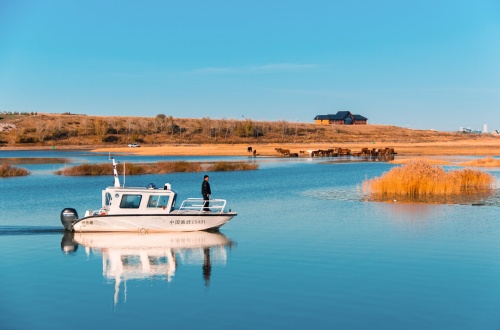 Hulun Lake
Hulun Lake 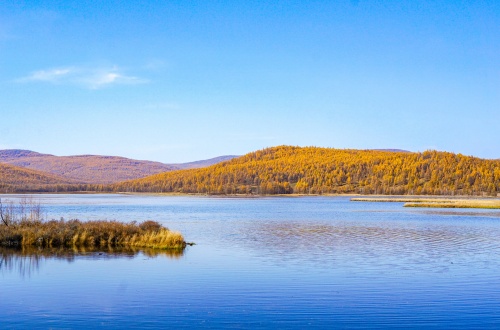 Arxan National Forest Park
Arxan National Forest Park 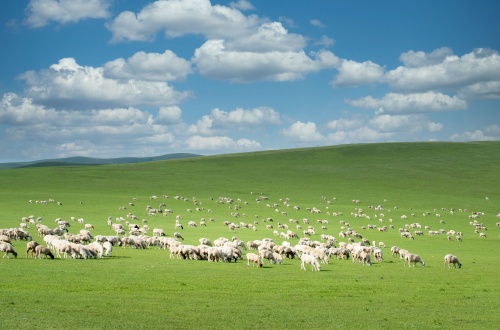 Hulunbuir Grassland
Hulunbuir Grassland 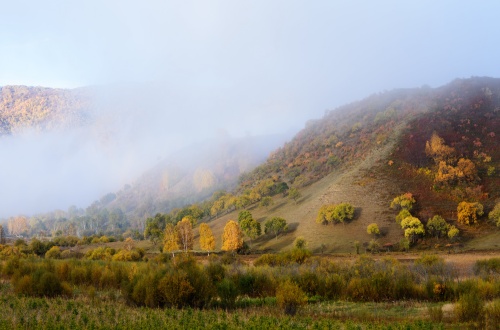 Wulanbutong Grassland Scenic Area
Wulanbutong Grassland Scenic Area